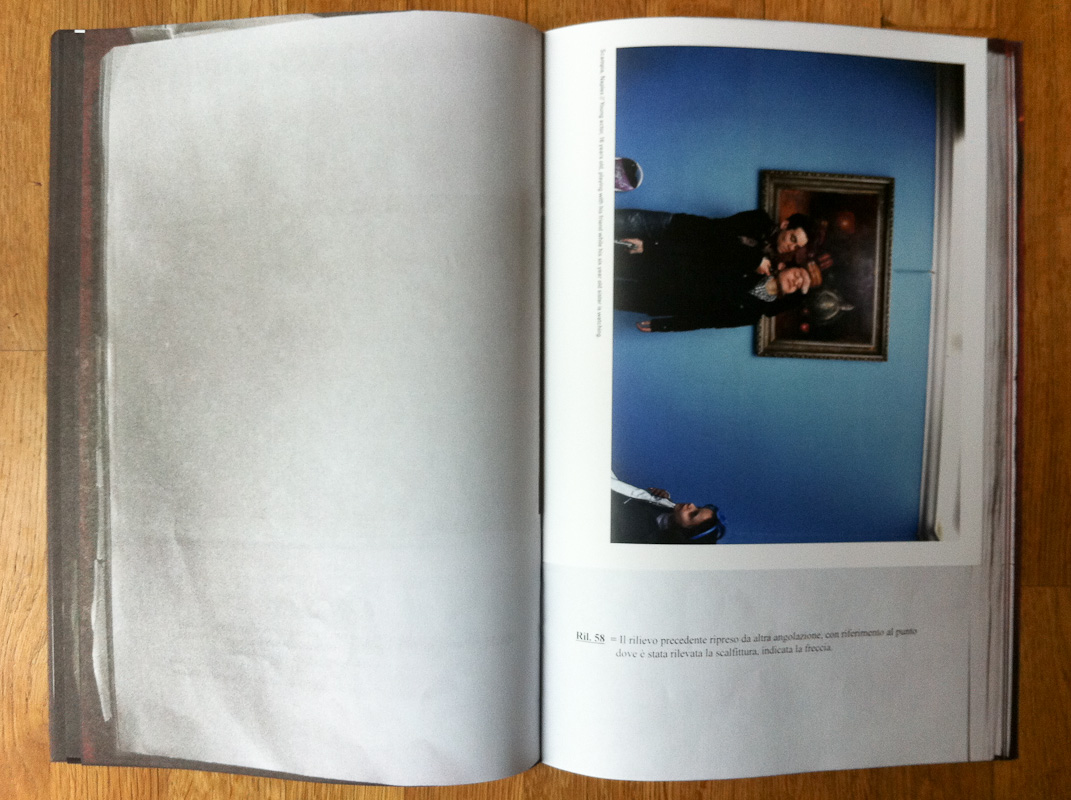 I caught up with Valerio Spada after missing the book launch of Gomorrah Girl at Le Bal in Paris in early March. The tallest Italian I have ever met, his enthusiasm and heart-on-his-sleeve sincerity are infectious and endearing (check out his Tumblr for a nice example of this). Spada explained how Gomorrah Girl had initially come about as a shoot on adolescence in Naples, during which he had discovered the story of Annalisa Durante, a 14 year-old girl who was killed, shot in the head by a stray bullet in an assassination attempt, as she was talking to a young Camorra mobster. It was when Spada heard Annalisa's story from her father Giovanni Durante, that he realised that he had found the heart of his project. After the excellent film, Gomorrah by Matteo Garrone (based on the Roberto Saviano novel), Spada's book also focuses on adolescence but more specifically on the plight of the teenage girls living in this fiercely masculine world.
I caught up with Valerio Spada after missing the book launch of Gomorrah Girl at Le Bal in Paris in early March. The tallest Italian I have ever met, his enthusiasm and heart-on-his-sleeve sincerity are infectious and endearing (check out his Tumblr for a nice example of this). Spada explained how Gomorrah Girl had initially come about as a shoot on adolescence in Naples, during which he had discovered the story of Annalisa Durante, a 14 year-old girl who was killed, shot in the head by a stray bullet in an assassination attempt, as she was talking to a young Camorra mobster. It was when Spada heard Annalisa's story from her father Giovanni Durante, that he realised that he had found the heart of his project. After the excellent film, Gomorrah by Matteo Garrone (based on the Roberto Saviano novel), Spada's book also focuses on adolescence but more specifically on the plight of the teenage girls living in this fiercely masculine world.
Hearing Spada talk about this book it is clear that after discovering the story of Annalisa, she became a constant presence that accompanied him in the background to every one of his shoots in the city. What I found ingenious in Gomorrah Girl is that it succeeds in translating this duality into the form of the book. It is essentially two intertwined books, the first simply presenting straight photographs of the police report on Annalisa's shooting and the second containing Spada's photographs of different aspects of the city's adolescent life. By interweaving these two books page by page, Annalisa's story, as embodied by the police report on her accidental murder, becomes a constant backdrop to the portraits of the young girls that make up the second book. This structure gives the book a certain ominous feeling, as if Annalisa's fate is hanging over each of the girls pictured in the book and could become theirs at any moment. The design by Sybren Kuiper (what is it with the Dutch photobook mafia?!?!) is intelligent and turns this otherwise straightforward documentary project, into something more interesting and multi-layered.
In a way, what I enjoyed most about the book is the way the object is so important in telling the story. Another example of the intelligence of the design is that, in addition to the two-book structure, the paper used for the police report section of the book is very flimsy, and, if you spend enough time with Gomorrah Girl, it's likely that its pages will resemble those of the police report that it depicts. Although Spada's portraits of Neapolitan adolescents are quite strong, I found myself wanting a more in-depth into their world rather than just a glimpse of each of their individual stories. I found that the book fell a little short of presenting a more complex and developed picture of the world in which these adolescents live. There are some fascinating threads to follow however, such as the neomelodico girls, which would be worthy of a book project in itself. In one caption Spada explains that the neomelodico "can make up to 200,000 euros per year for singing at weddings and other various ceremonies ... Through some of these songs and ceremonies the Camorra families send messages to each other." In a portrait of one of these young singers, tears roll down the girl's face but her expression betrays no emotion... if anything her face shows how hard she has had to become to live in the world that surrounds her.
Valerio Spada. Gomorrah Girl. Cross Editions (self-pub., soft cover, 40 + 40 pages, colour plates, 2011). Limited edition of 500 copies.
Rating: Recommended

